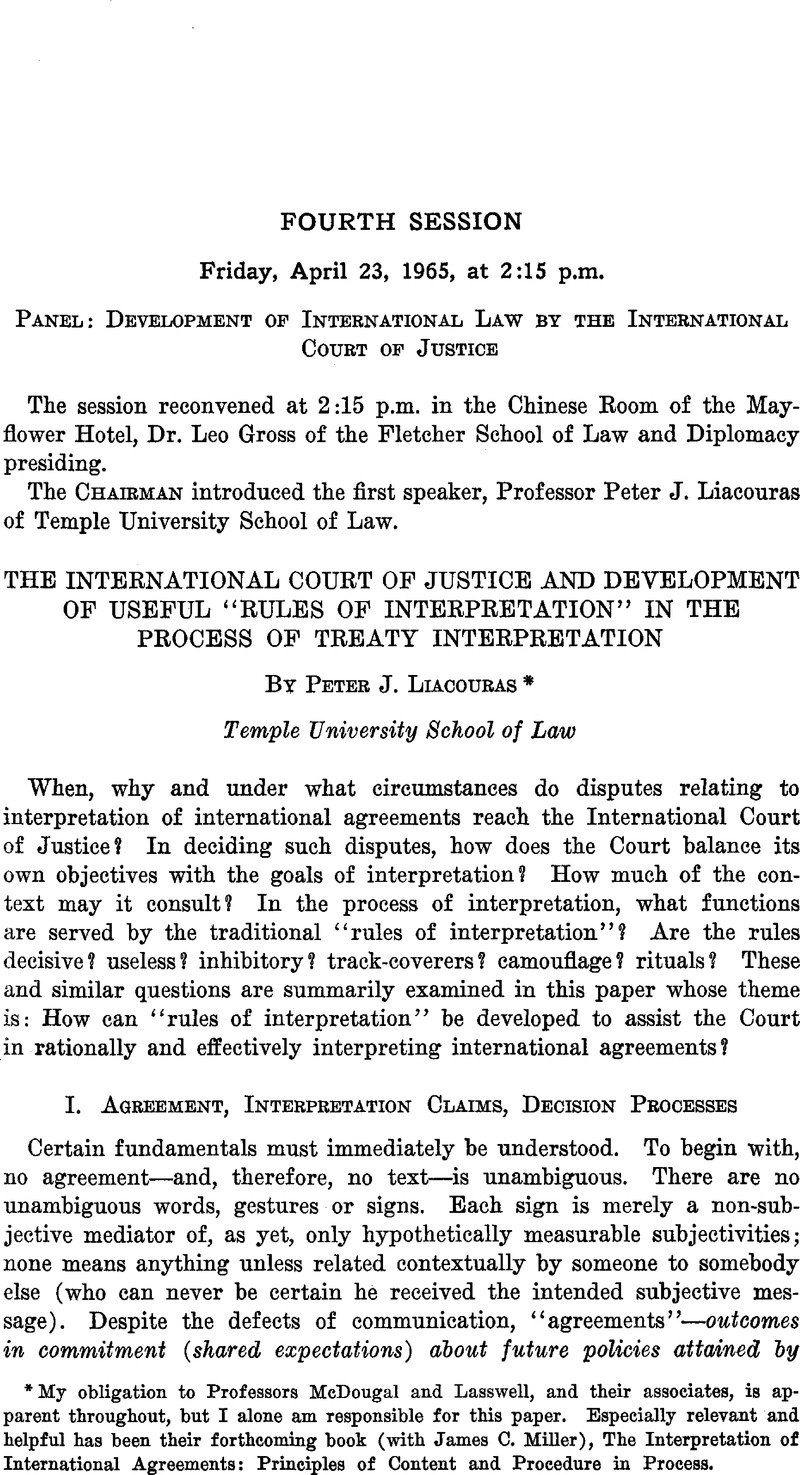No CrossRef data available.
Published online by Cambridge University Press: 27 February 2017

1 It is on the degree of relative explicitness and form of outcome that we (somewhat arbitrarily) conceptually distinguish “eustom” from “agreement.” An “international” agreement has an intended or actual impact on ordering events across nationstate lines. The type of agreement (“constitutive,” “contractual,” etc.) and the parties (number, whether nation-states, international organizations, individuals) are relevant factors in, e.g., determining the specificity and range of expectations created about various policies, but we do not distinguish among them in advance of a contextual survey.
2 Such informal, but no less authoritative decisions, are stable solutions because they are supported by what supported the agreement in the first place, and to widen the spectrum by what supports all law (and, therefore, international law): perceived common interest, reciprocity and fear of effective retaliation.
3 E.g., Monetary Gold case. Cf. Conditions of Admission, Anglo-Iranian, Ambatielos (Merits) cases.
4 Even the same word may mean different things to the same, let alone different, people 1 Among the variables affecting shared expectations are: general relations among the parties; their number and characteristics—individual (personality) and group (culture, public order concepts and systems); expectation of crisis; bargaining power; institutional, time and spatial confrontations; sequence, “directness,” and content of communication; value-range and intensity of the future policies projected (objectives); anticipated long-term value effects on all interested persons and communities; conduct subsequent to the outcome phase that corroborates former, or creates other, expectations; etc.
5 When ”context'’ is used by commentators to refer only to the sentence, article, chapter, or text of the treaty ﹛outcome phase), “ text “ and “context” seem indistinguishable.
6 Contextually derived expectations about how future claims will be decided (usually discernible, if at all, from a flow of many similar decisions) are not to be confused with these rules. Those expectations, which can refer both to procedure and probable substance of decision, affect predispositions of decision-makers and therefore may affect decision.
7 McDougal, Lasswell and Miller list 11 “principles of procedure“: procedural contextuality, adjusting effort to importance, identifying the focal agreement, historical operation, lexical operation, logical operation, assessing gesture and deed, scientific credibility, agreement probability, estimating the effects of decision, and examining self for bias.
8 Compare the combined revelations in the separate opinions in, respectively, the cases of Eight of Passage Over Indian Territory and Certain Expenses, with what the majority opinions divulged.